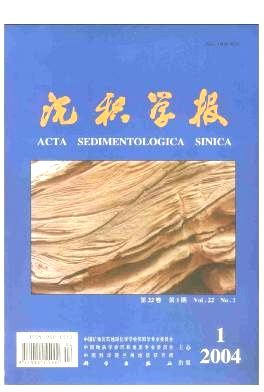|
[1]
|
Anadón P, Utrilla R. Sedimentology and isotope geochemistry of lacustrine carbonates of the Oligocene Campins Basin, north-east Spain. Sedimentology,1993, 40: 699~720. |
|
[2]
|
Anderson W T, Mullins H T, Ito E. Stable isotope record from Seneca Lake, New York: Evidence for a cold paleoclimate following the Younger Dryas. Geology,1997, 25: 135~138. |
|
[3]
|
Dean W E,Schwalb A. Holocene environmental and climatic change in the Northern Great Plains as recorded in the geochemistry of sediments in Pickerel Lake, South Dakota. Quaternary International,2000, 67: 5~20 |
|
[4]
|
Drummond C N, Wilkinson B H, Lohmann K C, et al. Effect of regional topography and hydrology on the lacustrine isotopic record of Miocene paleoclimate in the Rocky Mountains. Palaeogeography, Palaeoclimatology,Palaeoecology,1993, 101: 67~79 |
|
[5]
|
Talbot M R, Kelts K.Paleolimnological signatures from carbon and oxygen isotopic ratios in carbonates from organic carbon-rich lacustrine sediments. In: Katz B J ed.Lacustrine Basin Exploration- Case Studies and Modern Analogs. AAPGMemoir,1990, 50: 99~112 |
|
[6]
|
Utrilla R,Vázquez A,Anadón P. Paleohydrology of the Upper Miocene Bicorb Lake (eastern Spain) as inferred from stable isotopic data from inorganic carbonate. Sedimentary Geology,1998, 121:191~206 |
|
[7]
|
Yu Z, McAndrews J H, Eicher U. Middle Holocene dry climate caused by change in atmospheric circulation patterns: Evidence from lake levels and stable isotopes. Geology,1997, 25: 251~254. |
|
[8]
|
刘传联. 稳定同位素地球化学方法在古湖泊学研究中的应用. 见:汪品先,刘传联. 含油盆地古湖泊学研究方法. 北京:海洋出版社,1993. 96~123[Liu Chuanlian. 1993. Application of stable isotopic geochemical methods to paleolimnological research. In: Wang Pinxian, Liu Chuanlian, eds. Paleolimnological research methods of oil-producing basins. Beijing: Marine Press, 1993. 96~123] |
|
[9]
|
彭立才, 孙镇城. 青藏高原咸化湖泊沉积碳酸盐岩碳、氧同位素组成及其地质意义. 岩石矿物学杂志 1996, 15(3):235~240[ Peng Licai, Sun Zhencheng. Carbon and oxygen stable isotopic composition of carbonate rocks from saline lakes on Qinghai-Xizang Plateau and its geological significance. Acta Petrologica et Mineralogica, 1996, 15 (3): 235~240] |
|
[10]
|
Drummond C N, Patterson W P, Walker J C. Climatic forcing of carbon-oxygen covariance in temperate-region marl lakes. Geology,1995,23: 1031~1034 |
|
[11]
|
Li H C, Ku T L. δ 13C-δ 18O covariance as paleohydrological indicator for closed-basin lakes. Palaeogeography,Palaeoclimatology, Palaeoecology,1997,133: 69~80 |
|
[12]
|
刘传联, 赵泉鸿, 汪品先. 湖相碳酸盐氧碳同位素的相关性与生油古湖泊类型. 地球化学, 2001, 30(4): 363~367[ Liu Chuanlian, Zhao Quanhong, Wang Pinxian. Correlation between carbon and oxygen isotopic ratios of lacustrine carbonates and types of oil-producing paleolakes. Geochimica, 2001, 30 (4): 363~367 |
|
[13]
|
张秀莲. 碳酸盐岩中氧、碳同位素与古盐度、古温度的关系. 沉积学报, 1985, 3 (4): 17~30[Zhang Xiulian. Relationship between carbon and oxygen stable isotope in carbonate rocks and paleosalinity and paleotemperature of seawater.Acta Sedimentologica Sinica, 1985, 3 (4): 17~30] |
|
[14]
|
邵龙义. 碳酸盐岩氧、碳同位素与古温度等的关系. 中国矿业大学学报, 1994,23(1): 39~45[ Shao Longyi. The Relation of the oxygen and carbon isotope in the carbonate rocks to the paleotemperature etc. Journal of China University of Mining & Technology, 1994, 23 (1): 39~45] |
|
[15]
|
Knoll A H,Hayes J M,Kaufman J A,et al. Secular variation in carbon isotope ratios from Upper Proterozoic successions of Svalbard and East Greenland. Nature,1986,321 (26): 832~838 |
|
[16]
|
王可法. 海相碳酸盐碳同位素组成及其意义. 地质地球化学,1994, 5: 50~54[Wang Kefa. Carbon isotopic composition in marine carbonates and its geological significance. Geology Geochemistry, 1994, 5: 50~54] |
|
[17]
|
唐忠驭. 三水盆地火山活动与油气的关系. 石油与天然气地质,1984, 5 (2): 89~100[Tang Zhongyu. Relationship of oil and gas with volcanism in Sanshui Basin. Oil & Gas Geology, 1984, 5 (2): 89~100] |
|
[18]
|
张显球, 周晓萍, 陈修奕.三水盆地白垩-第三纪钻井地层划分对比图集. 北京:海洋出版社,1993.181[Zhang Xianqiu,Zhou Xiaoping and Chen Xiuyi. Atlas of Cretaceous to Tertiary strata classification and correlation in the Sanshui Basin of South China. Beijing: Marine Press, 1993.1~177] |
|
[19]
|
严俊君, 金之钧. 广东三水残留盆地特征及油气地质条件. 沉积学报,1997, 15(1): 141~146[Yan Junjun and Jin Zhijun. The features of the Sanshui Relict Basin and its conditions of petroleum geology, Guangdong Province. Acta Sedimentologica Sinica, 1997, 15 (1): 141~146] |
|
[20]
|
王将克, 李国藩, 汪晋三. 广东三水盆地及近邻盆地早第三纪鱼化石. 中国古生物志, 总号第160册, 新丙种第22号. 北京:科学出版社,1981.1~90[Wang Jiangke,Li Guofan,and Wang Jinsan.The early Tertiary fossil fishes from Sanshui and its adjacent basin, Guangdong. Beijing:Science Press, 1981.1~90] |
|
[21]
|
叶敦禧. 广东省珠江三角洲地区下第三系沉积特征及含矿性.广东地质科技, 1982, 1: 25~38[Ye Dunxi. Depositional features and of the Lower Palaeogene in the Pearl River Delta area of Guangdong. Guangdong Geological Science, 1982, 1: 25~38] |
|
[22]
|
Verzer J. Depositional and diagenetic history of limestones: stable and radiogenic isotopes. In: Clauer N,Chanduri S, eds. Isotopic signatures and sedimentarz records.- Lecture Notes in Earth Sciences.Berlin:Springer, 1992,3: 13~48 |
|
[23]
|
Magaritz M.A new explanation for cyclic deposition in marine evaporite basins: meteoric water input. Chemical Geology, 1987, 62: 239~250 |
|
[24]
|
O'Shea K J, Miles M C, Fritz P, et al. Oxygen-18 and carbon-13 in the carbonates of the Salina formation of southwestern Ortario. Canada Journal of Earth Science, 1988, 25: 182~194 |
|
[25]
|
Sheu D D. 13C and 18O compositions of carbonates from a cyclic carbonate-evaporate rock sequence: Evidences for meteoric water input. ChemicalGeology,1990, 81: 157~162 |






 DownLoad:
DownLoad: